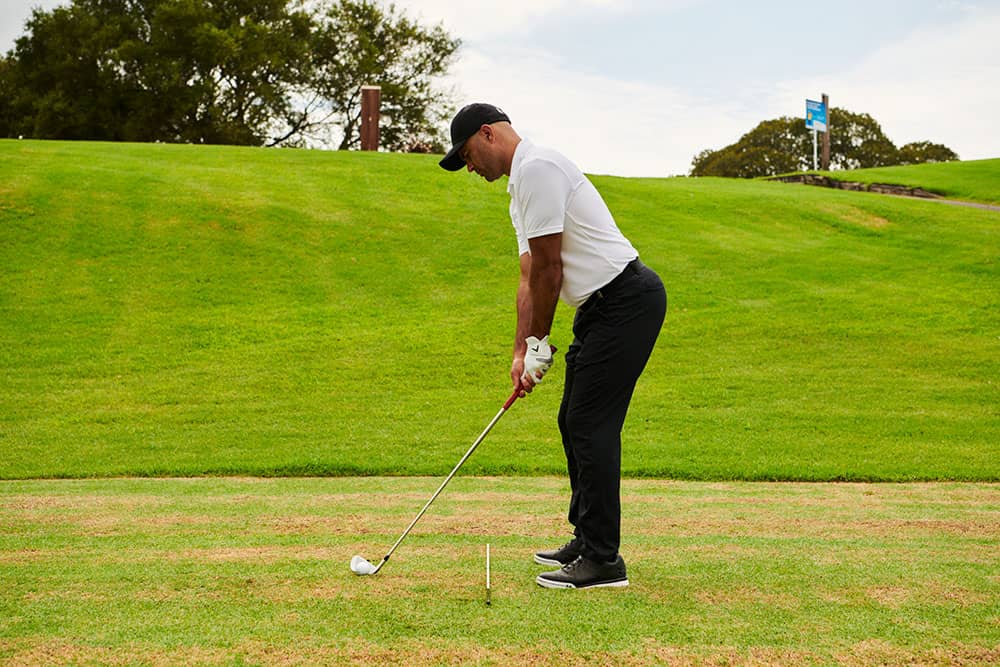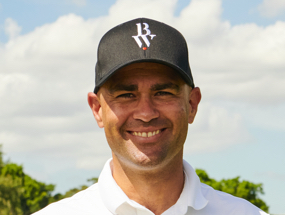When you strike a golf ball with a club, it generates a great deal of spin, causing a golf ball to almost always naturally curve in the air. The curve of the golf ball as it travels through the air is known as the shot shape.
Different golf shot shapes have their own unique benefits and situations where they are preferred. Here, we’ll explain the different shape shots in golf and the benefits of shot shaping.
Why Do Golfers Shape Shots?
Almost all golfers naturally curve the ball one way or the other and hit it at a certain height, a concept known as their natural shot shape. There are many reasons why golfers shape shots. Elite golfers learn to shape shots on purpose depending on weather conditions, obstacles, and hazards.
Every player has their own unique shot shape, with some naturally hitting low or high or curving it a certain way. What works great for one golfer may not work as well for another player — and that’s part of the beauty of the game of golf. It’s all about finding the shot shape that works best for you and your playing style.
However, there are certain situations where shaping a shot a particular way is beneficial, such as:
- Getting an improved angle toward the flag
- Responding to windy conditions
- Shaping the ball around a tree, object, or hazard
- Improving your golfing skills
What Determines a Golf Ball’s Trajectory?
The trajectory of a golf ball is mainly influenced by:
- Attack angle at impact
- Ball position at impact
- Clubface loft at impact
For instance, a positive attack angle or slightly forward placement of the ball in your stance will generate a higher ball flight. Alternatively, a negative attack angle will promote a lower ball flight.
What Are the Different Types of Shot Shaping?
Here are the types of shot shaping explained:
- Draw – A draw describes a trajectory where the golf ball starts outside the target line directly after impact before curving in and finishing at the target. For right-handed players, the golf ball initially shoots to the right only to curl left mid air before landing on target.
- Fade – A fade shot is a trajectory that sees the golf ball starting inside the target line following impact. Then it curves out and finishes at the target. For right-handed golfers, this means the ball shoots to the left at first before curling right in the air before it lands on the target. As opposed to a slice, a fade is not a golf error. Although the ball flight is not straight, it still lands on the target.
- Stinger – The stinger, also known as a punch shot, was made famous by Tiger Woods. This is a golf shot that travels far lower than its typical ‘normal’ ball flight. This shot is beneficial if you are facing a situation that requires you to keep the ball closer to the ground, such as keeping a ball beneath a tree’s branches. A stinger is also helpful if a headwind — or crosswind — is especially strong.
- High Shot – A high shot is when the golf ball travels significantly higher than your normal ball flight. This type of shot is typically used to get past hazards, avoid trees or obstacles, and gain more distance on a hole. A high shot can also be beneficial if you are dealing with the wind at your back while facing a complicated pin location.
How to Shape Your Shots
Depending on your natural ball flight, some shot shapes may be easier than others for you to successfully hit. Golfers with a tendency to hit down on the ball may be better suited to pulling off the stinger, whereas players whose miss is off to the right may find it easier and more natural to fade the ball.
Steps on How to Hit a Draw:
- Close your stance by slightly rotating your feet to the right of the target rather than parallel to the direction of the target. You want your clubface closed in relation to the stance line but open relative to the target line.
- Close your clubface so that it is aiming down the target line or slightly to the left of the target line. This sets up the shot so that it will initially head towards the right. When shaping your shot, the line of the clubface is the most important factor when it comes to the initial direction of the ball.
- Then you swing the club, swing like you would normally — along your body/feet for a swing path that is inside-out. Avoid trying to correct your feet being slightly aimed right.
How to Hit a Fade:
- Next, you want to open your stance to avoid producing a shot that goes straight in that direction. Rotate your stance so it is open in relation to the target. A clubface that is closed in relation to the target but opens in relation to your stance will create a subtle counter-clockwise spin that generates a ball trajectory that goes from left to right.
- Open your clubface so it is aiming down the target line or slightly to the right.
- Even though your stance is slightly aimed to the left of the target, swing more out to in, almost an “over the top” some may call this
How to Hit a Low (Stinger):
- Choose a club with less loft to naturally contribute to a lower ball flight.
- Use a narrow stance (feet slightly closer to one another than your normal stance) to help you decrease swing power, reduce shot distance, and increase your control over the ball.
- Focus on gaining control over the ball rather than power. Position the ball slightly back of the centre in your stance to promote a lower shot.
- Grip down slightly on your club with hands pressed forward to gain even more control.
- Slightly open your stance and shift your weight to your front foot. This will help to further reduce the club loft and keep your shot lower.
- For some golfers it is also helpful to have a shorter or lower finish to their swing which helps promote a lower flight.
How to Hit a High Golf Shot:
- Position the golf ball inside your front foot and slightly further forward in your stance.
- If this is a tee shot, use a longer or higher tee than normal.
- Move your trail foot back to widen your stance and keep your head behind the ball.
- Keep your head, club shaft, and lead leg in a straight line at impact to maximise distance, get a higher angle of launch, and minimise spin.
Want More Golf Tips?
No matter where you are in the world, we can help transform your golf game. Whether you need beginner golf lessons, ongoing support, or want to take your golf skills to the next level and lower your scores, we offer a variety of online golf coaching packages to meet your needs.
With no-nonsense golf instruction from PGA Professional Bobby Walia, we can explore tips and drills for your short game, long game, shot types, mindfulness, and give you all the tools needed to raise your golf game. Whether you want in-person golf coaching, online golf lessons, or want to know more about our Online Golf Academy, we’re here to help. Please feel free to reach out with any questions or to learn more about our Online Golf Lessons.



